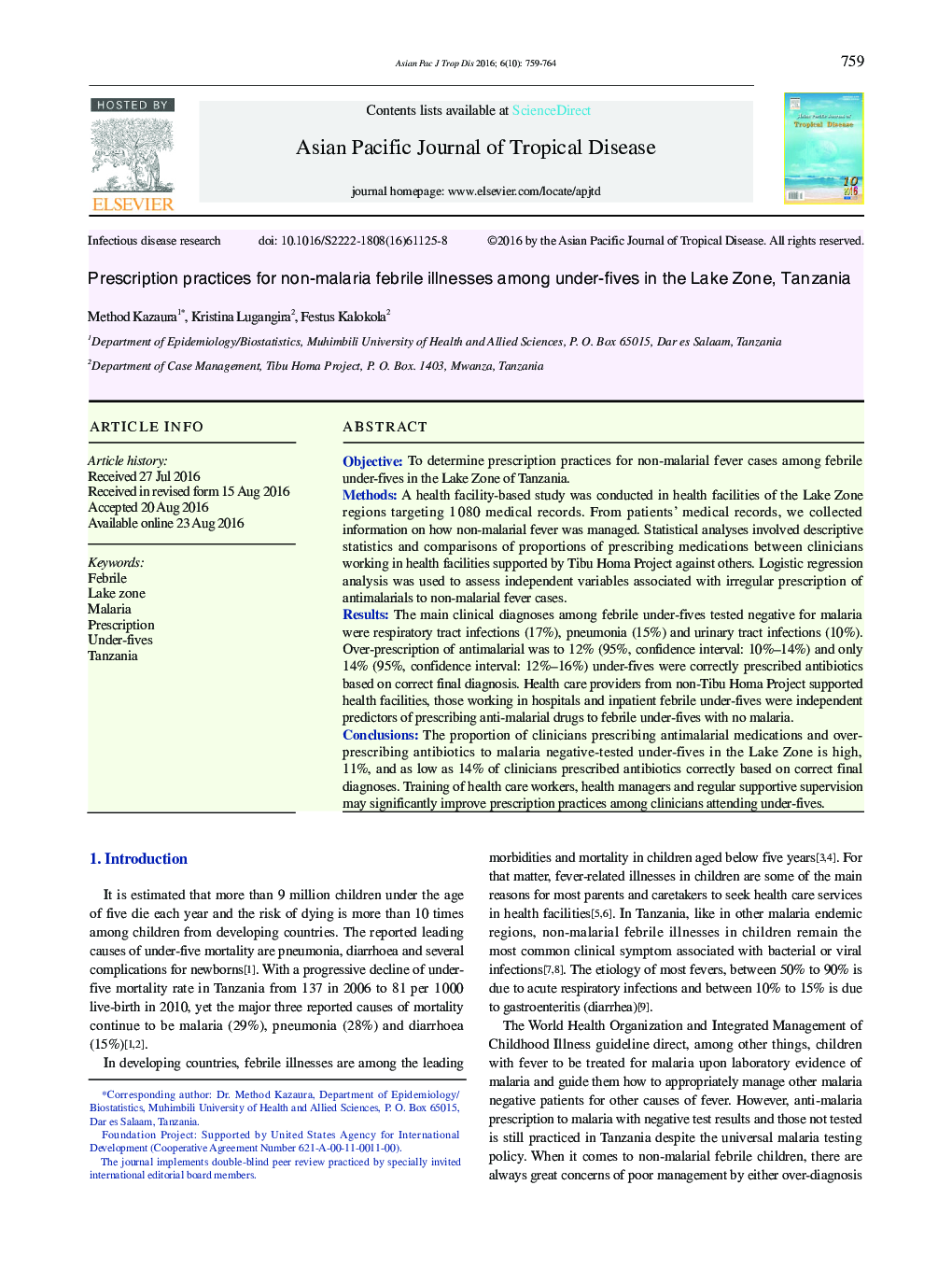| Article ID | Journal | Published Year | Pages | File Type |
|---|---|---|---|---|
| 3453781 | Asian Pacific Journal of Tropical Disease | 2016 | 6 Pages |
ObjectiveTo determine prescription practices for non-malarial fever cases among febrile under-fives in the Lake Zone of Tanzania.MethodsA health facility-based study was conducted in health facilities of the Lake Zone regions targeting 1 080 medical records. From patients' medical records, we collected information on how non-malarial fever was managed. Statistical analyses involved descriptive statistics and comparisons of proportions of prescribing medications between clinicians working in health facilities supported by Tibu Homa Project against others. Logistic regression analysis was used to assess independent variables associated with irregular prescription of antimalarials to non-malarial fever cases.ResultsThe main clinical diagnoses among febrile under-fives tested negative for malaria were respiratory tract infections (17%), pneumonia (15%) and urinary tract infections (10%). Over-prescription of antimalarial was to 12% (95%, confidence interval: 10%–14%) and only 14% (95%, confidence interval: 12%–16%) under-fives were correctly prescribed antibiotics based on correct final diagnosis. Health care providers from non-Tibu Homa Project supported health facilities, those working in hospitals and inpatient febrile under-fives were independent predictors of prescribing anti-malarial drugs to febrile under-fives with no malaria.ConclusionsThe proportion of clinicians prescribing antimalarial medications and over-prescribing antibiotics to malaria negative-tested under-fives in the Lake Zone is high, 11%, and as low as 14% of clinicians prescribed antibiotics correctly based on correct final diagnoses. Training of health care workers, health managers and regular supportive supervision may significantly improve prescription practices among clinicians attending under-fives.
